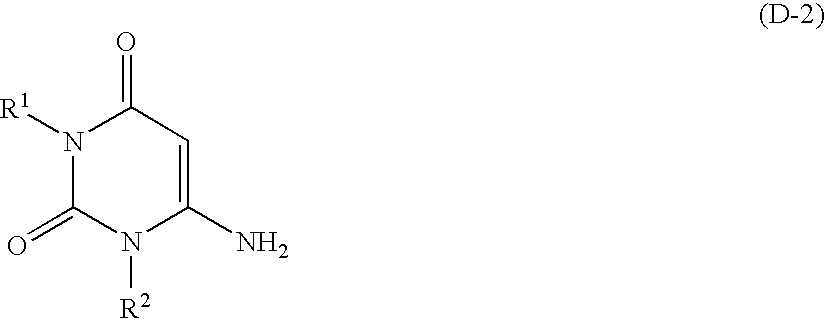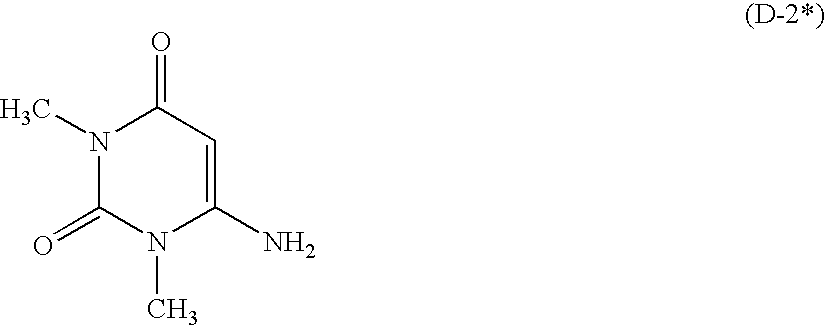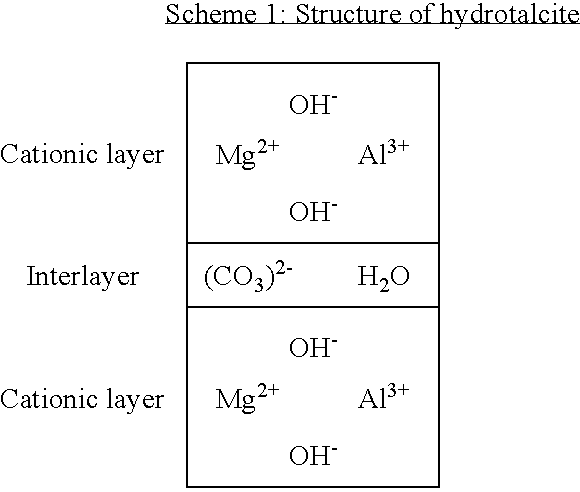Use of fluoroalkane sulfonic acids for stabilising organic plastics containing halogen
a technology of organic plastics and fluoroalkane sulfonic acids, which is applied in the field of use of fluoroalkane sulfonic acids for stabilising organic plastics containing halogen, can solve the problems of general insufficient long-term stability of organic plastics on their own
- Summary
- Abstract
- Description
- Claims
- Application Information
AI Technical Summary
Benefits of technology
Problems solved by technology
Method used
Image
Examples
examples
[0322] Substances Used
[0323] Evipol SH 6030=S-PVC (k value=60)
[0324] Omyalithe 97 T=chalk
[0325] Zeolite A
[0326] Dipentaerythritol
[0328] Trifluoromethanesulfonic acid, Na salt
[0329] Dimethyl aminouracil (corresponding to the formula in the description) as a commercially available product
[0330] N,N'-dimethyl-N-cyanoacetylurea=commercially available substance
examples 1 to 8
[0331] Table 1 below shows on the one hand the individual ingredients of the test formulations and, on the other hand, the test results obtained. The numbers of the Examples are shown in the first line of the Table. The quantities of the individual components are expressed in phr (phr=parts per hundred resin) which indicates how many parts by weight of the particular component are present in the PVC (based on 100 parts by weight PVC) after addition of the composition. Accordingly, the formulations each contain 100 parts PVC (Evipol SH 6030).
examples 2 and 4 and 6 to 8
[0332] Examples 2 and 4 and 6 to 8 correspond to the invention. Examples 1, 3 and 5 are intended for comparison.
[0333] The test formulations were subjected--partly or completely--to the following measurements:
[0334] Stability test under heat stress. Strips were produced from the formulations and tested for static thermal stability at 170.degree. C. The strips were produced by homogenizing and plasticizing the PVC powder mixture and the formulation components mentioned for 5 minutes at 170.degree. C. on a laboratory roll mill. Test specimens measuring 17.times.17 mm were cut out from the ca. 0.5 mm thick strips thus produced. The test specimens were placed in a heating cabinet at 170.degree. C. on glass plates on rotating trays and removed at 15-minute intervals until all the test specimens were "burnt" (i.e. were black in color).
[0335] Color measurement on strips. In addition, the L*,a*,b*-method (cf. DIN 6174) known to the expert was applied to the test strips used for further char...
PUM
| Property | Measurement | Unit |
|---|---|---|
| Time | aaaaa | aaaaa |
Abstract
Description
Claims
Application Information
 Login to View More
Login to View More - R&D
- Intellectual Property
- Life Sciences
- Materials
- Tech Scout
- Unparalleled Data Quality
- Higher Quality Content
- 60% Fewer Hallucinations
Browse by: Latest US Patents, China's latest patents, Technical Efficacy Thesaurus, Application Domain, Technology Topic, Popular Technical Reports.
© 2025 PatSnap. All rights reserved.Legal|Privacy policy|Modern Slavery Act Transparency Statement|Sitemap|About US| Contact US: help@patsnap.com



